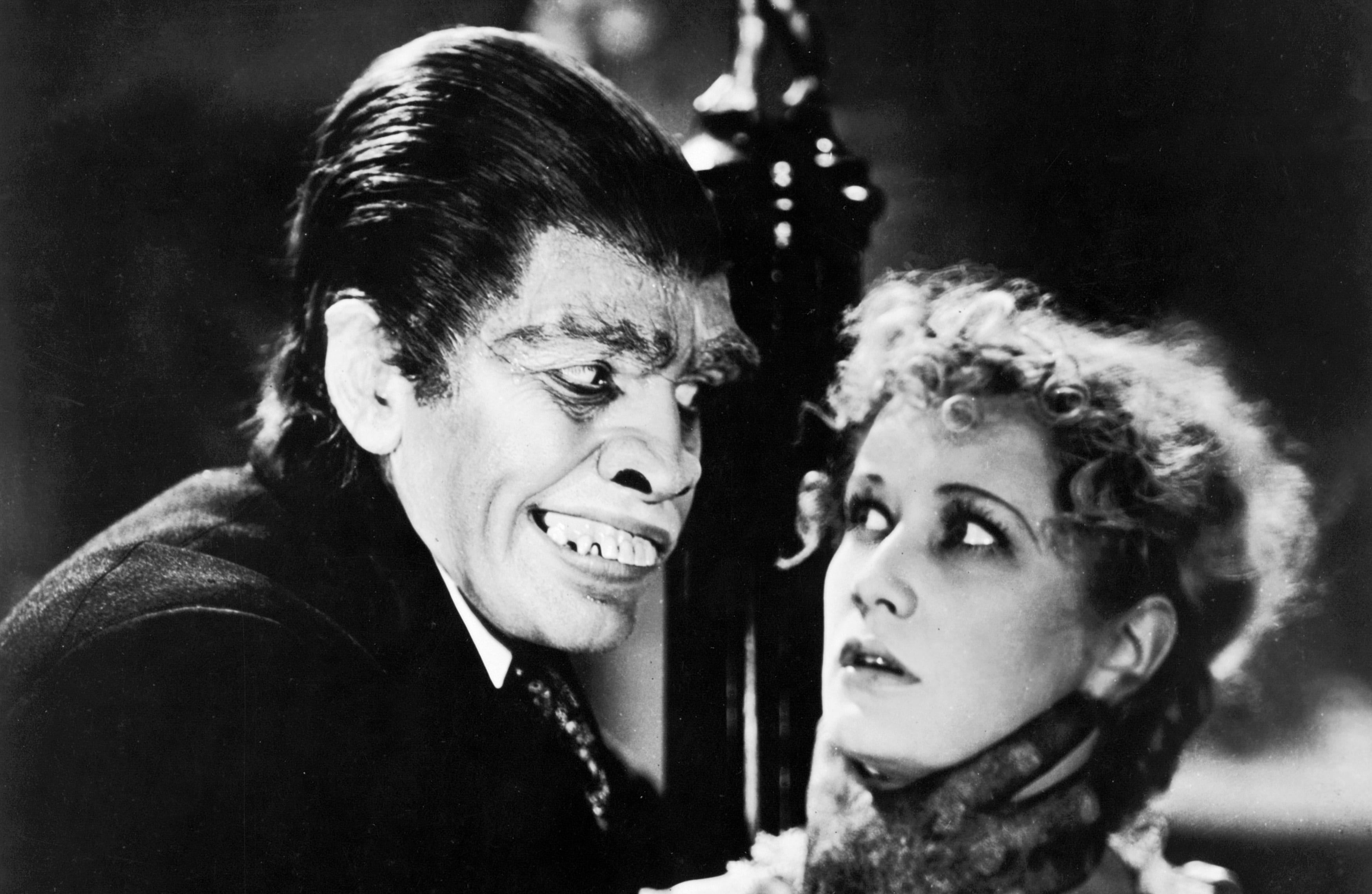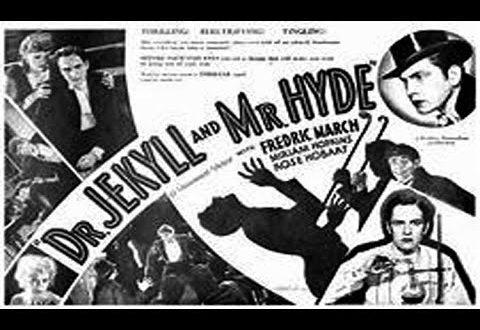I say, good sport, the term “Jekyll and Hyde” sure does get used a lot, doesn’t it? Ever wonder it came from? Back in 1886, Scottish novelist Robert Louis Stevenson wrote a novel called The Strange Case of Dr. Jekyll and Mr. Hyde.
It told the story through the eyes of Gabriel John Utterson about a scientist named Dr. Henry Jekyll who is on the verge of a breakthrough. Strangely (pun intended), there are days on end where Dr. Jekyll is nowhere to be found, but a complete jerk named Mr. Edward Hyde shows up around merry ol’ London instead, causing a ruckus. He gets drunk, starts fights, commits murder… and then he suddenly disappears. When the constables start looking for Hyde for one particular murder, Dr. Jekyll reappears and is asked if he had seen the maniac. The good doctor tells Utterson and the police that Mr. Hyde is away… but Utterson recognizes Jekyll’s handwriting in the suicide note Hyde leaves behind. Utterson thinks that Jekyll is covering for Hyde, but he can’t figure out why.
*SPOILER ALERT*
At the end of The Strange Case of Dr. Jeckyll and Mr. Hyde, it is revealed that Dr. Jekyll and Mr. Hyde are the same person. Jekyll had created a potion that brought out his evil, animalistic inner side to deal with the hidden vices he has. Hyde eventually takes over his actual personality to the point where Jekyll kills himself to end his evil side once and for all….

Or so you think. Anyone reading this, keep reading!
Thirty-four years after the novel became a smash hit in 1920, John S. Robertson directed a silent movie based on the book. John Barrymore played Jekyll/Hyde, and the movie was such a complete disaster that another movie adaptation was made eleven years later.
Yes, that’s right. There have been remakes long before the current flood of god awful reboots cluttering up Hollywood these days. This time, Samuel Hoffenstein (Phantom of the Opera 1943) and Percy Heath (Two Flaming Youths 1927) decided to craft a screenplay based on Stevenson’s book. An Armenian named Rouben Mamoulian (The Mark Of Zorro 1951) directed the film, titled Dr. Jeckyll and Mr. Hyde, and the lead was played by Academy Award winner Frederic March (Death Of A Salesman 1941).
Released on Christmas Eve 1931, the film follows the plot of the book with a few liberties. In the book, Mr. Hyde looked different than the stoic Dr. Jekyll with a dirtier face, longer hair and a beard, but in the movie, he looks completely deformed.
Like I mentioned above, at the end of the book, Jekyll’s colleagues find Hyde dead in the doctor’s clothes and a suicide note saying he was being taken over by the beast permanently. In Dr. Jeckyll and Mr. Hyde, Jekyll transforms into Hyde in front of his colleagues and the police and is shot dead by the constables. He transforms back into Jekyll after he was shot. Not exactly the scientist saving humanity from himself, is it? But I digress.

Frederic March did such a good job in Dr. Jekyll and Mr. Hyde that he won an Oscar for Best Actor in 1931. The movie itself lost out to Cimarron for Best Picture. Twenty-five year-old makeup artist Wally Westmore (The War Of The Worlds 1953) came up with Mr. Hyde’s exaggerated facial features including his canine teeth. This launched Wally’s career as he was the makeup man in over 300 movies. Other stars included Miriam Hopkins (Trouble in Paradise 1932) as Ivy Pierson, Rose Hobart (The Mad Ghoul 1943) as Muriel Carew, Holmes Herbert (The Life of Emile Zola 1937) as Dr. Lanyon, Halliwell Hobbes (Gaslight 1944) as General Danvers Carew, and Edgar Norton (The Man Who Laughs 1928) as Poole.
What made the movie controversial was the explicit sexual content that was common in the pre-code era. What’s that, you ask? In 1934, the Motion Picture Association of America became the governing body of motion pictures which censored pretty much everything. Remember the Comics Code Authority in 1954? Same thing, but this happened in movies twenty years earlier. Actresses that had nude scenes in the pre-code era like Clara Bow and Hedy Lamarr wouldn’t be going nude again. What made Dr. Jekyll and Mr. Hyde so controversial? There’s a scene where Mr. Hyde tries to rape Ivy, something that wouldn’t be allowed just four years later, even if Frederic March and Miriam Hopkins were okay with it….

The bare essence of the novel is about bringing out the dark side of your personality, and Robert Louis Stevenson accomplished that big time. It speaks to the legacy that good and evil cannot exist without each other. It also begs the question: which side of your personality is the real you? Think of the biggest, nerdiest nerd you know and imagine if he or she pulled up the next day in a varsity jacket and a fast car with their hair slicked back. Or think of someone in a business suit, short hair, clean shaven and bumping rap music and the next day he’s got long hair, a beard, dressed in biker clothes, and brandishing a crowbar while the rock band Motorhead plays a tune. Stevenson’s Jekyll needed a potion to be Mr. Hyde, but eventually, he became the monster all by himself. There’s a Hyde in all of us, and in some cases, a Jekyll.

The legacy of the movie and Stevenson’s novel withstands the test of time. In 1994, Dr. Jekyll and Mr. Hyde were played by Patrick Stewart in The Pagemaster. One year later, a comedy was released called Dr. Jekyll and Ms. Hyde to showcase a clever gender swap spin on the old story featuring Tim Daly and Sean Young. For some reason, Nintendo Entertainment System decided to make a video game based on the novel in 1988, and it turned into one of the biggest disasters in history. The game ended up being the primary fodder to launch the YouTube career of James Rolfe aka The Angry Video Game Nerd. Two of his most famous episodes revolve around the bad video game and are still enjoyed to this day. The television series Star Trek had its own adaptation of the Jekyll & Hyde dynamic in 1966 with the episode “The Enemy Within.” A transporter malfunction creates two Captain Kirks, one of them a deranged, emotional animal and the other a calm, collected, somewhat mindless robot. They had to be made complete because they couldn’t survive without the other.
Arguably, one of the best film adaptations of Jekyll and Hyde wasn’t even in a standalone movie. It was in the 2017 remake of The Mummy. Russell Crowe did a brilliant job of portraying the characters of Jekyll and Hyde that was closer to the book than any adaptation before. When it comes to Dr. Jekyll and Mr. Hyde, Frederic March is still honored for his performance, and the legacy of Jekyll and Hyde still lives on…..
Yeah, it lives on in all of us. Which are you, Jekyll or Hyde? The choice is yours.
 PopHorror Let's Get Scared
PopHorror Let's Get Scared




